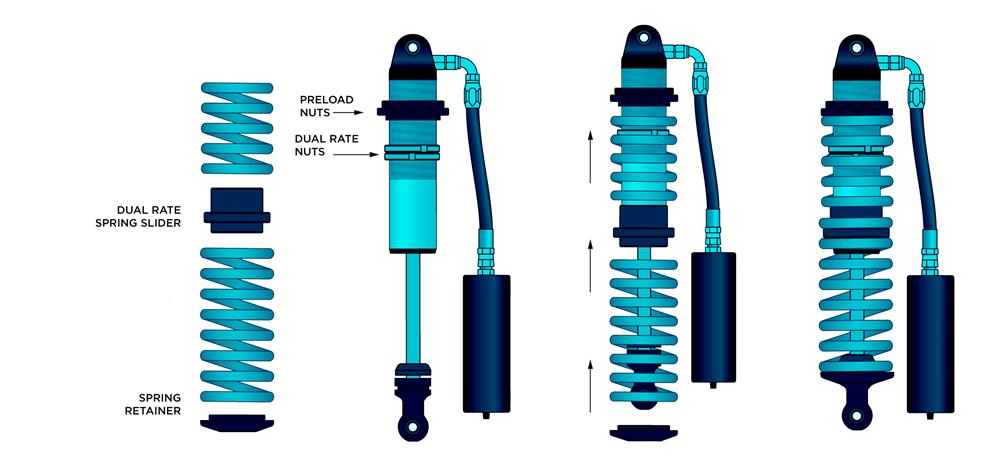King 3" coilover spring
Coilover spring with 3“ inner diameter, length 12”x200LB, by KING!
Limited availability of only 2 pieces, payment by bank transfer ONLY. Orders paid for via PayPal will be canceled and PayPal fees charged to the customer.
The spring shows signs of assembly because it has been used for testing, but it is in perfect working order.
King Shocks coil springs are manufactured in the United States using high-strength, top-quality chrome-plated silicon wire.
They are designed and manufactured exclusively for off-road vehicles. The settings, wire diameter, and different lengths have been tested live on all types of terrain and have been put to the test in international races such as Baja, Dakar, and King Of The Hammers.
The stiffness or load of the spring is a number that represents the amount of force in pounds required to compress all the coils by 1 inch.
A single-rate spring is a spring installed in the coilover that compresses linearly. If the spring load is 300 pounds per inch, compressing it one inch generates 300 pounds, two inches generates 600 pounds, and three inches equals 900 pounds.
Getting the correct coilover spring preload is the first step in setting up your suspension. So what is preload?
Preload is the initial (pre) tension (load) on your springs before carrying the weight of the vehicle. Coilover spring preload is measured in inches, in other words, how many inches have you compressed the springs before applying weight.
Preload at the coilover should be between ½” and 6” to prevent the springs from coming loose and to ensure proper droop, wheel rate and bottoming control. Less preload gives you better handling and less sag when adding weight but reduces how well the wheel droops over bumps. Common setups should use 1-2″ of preload in the front and 2-3″ in the rear.
When in doubt, shoot for more preload than less. If your suspension isn’t drooping properly into a bump and you’re rebound is correct, try adding more preload with softer rates.
How to calculate preload in new coilovers:
- Start with the springs and shocks installed on the vehicle:
- springs loose
- dual rate nuts high on the body, spring slider not touching dual rate nuts
- screw the preload nut down while gently rattling the springs, when they stop rattling that is zero preload;
- measure and record how many inches of threads are showing above the preload nuts;
- every inch you screw the preload nut down is another inch of preload;
- every inch you screw it up is one inch of negative preload
- screw the preload nut down to give you the target preload;
- adjust the preload up or down to give you the desired amount of shock shaft showing at ride height.
If you have negative preload, or your preload is more than +/-1″ from our target we should swap springs.

Dual rate nuts: allows you to adjust the transition point between the softer upper spring and stiffer lower spring. for most applications, the stop nuts should be positioned about 1 inches abave dual rate slider when the vehicle is at ride height and 2 inches in back.
Preload nut: allows you to adjust the preload on the coilover shock. for zero preload, extend shock completely and have the preload nut resting against the upper spring not allowing the springs to move up or down.